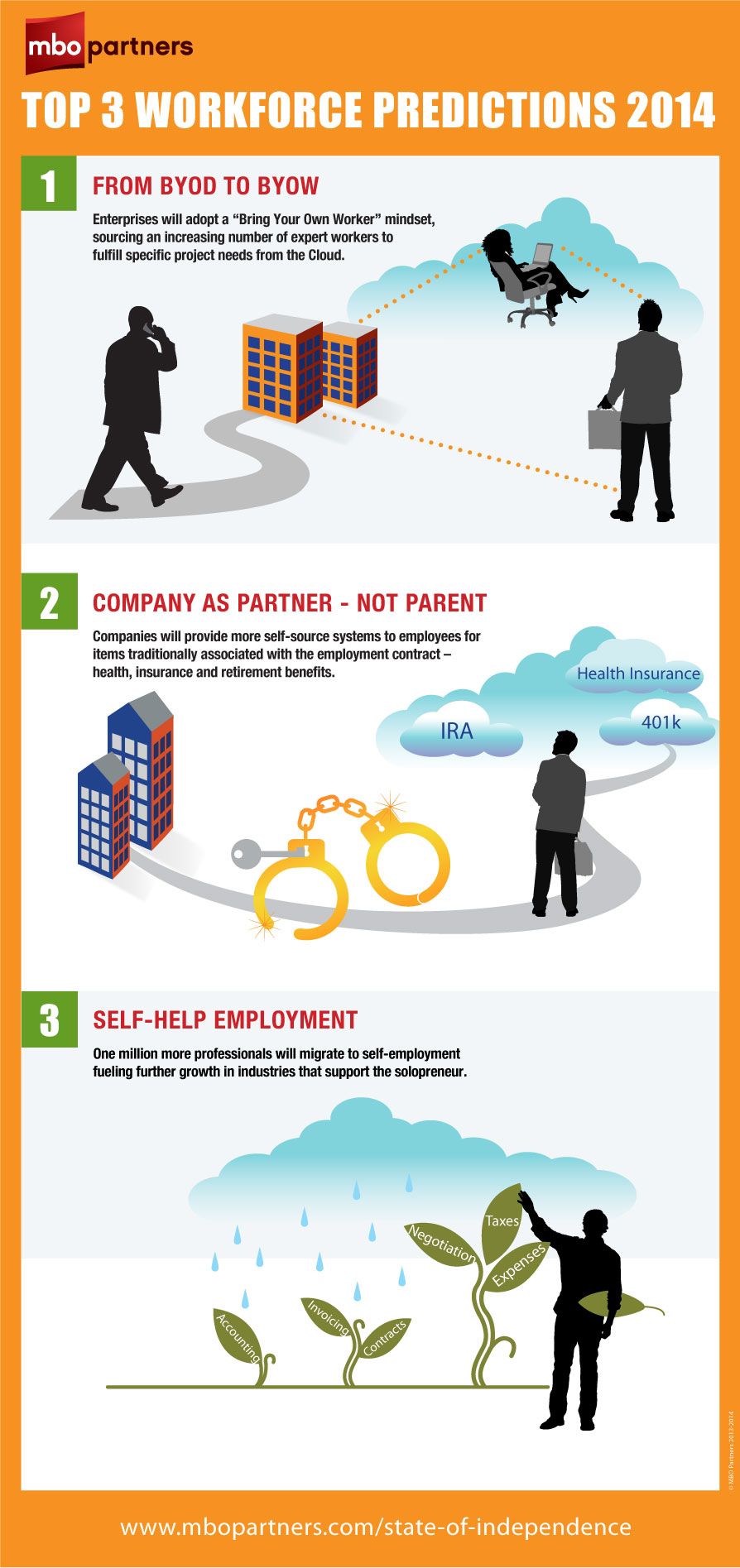State of Independence Report : 2014
Independents realize the strategic and tactical advantages of operating a solo business
MBO Partners' "2014 State of Independence in America Report," the fourth annual study of independent workers and their impact on business, focuses on the portion of the independent workforce -- approximately 2.7 million individuals -- that generates revenue via one or more on-demand economy platforms or marketplaces such as Etsy, Ebay, and Freelancer.com.
"There are many flavors of independent workers in the United States," said Gene Zaino, CEO of MBO Partners. "From Side Giggers/ Moonlighters to Freelancers and Independent Consultants, the Sharing Economy is just one of those flavors. Right now less than ten percent of the U.S. independents are using on-demand platforms and marketplaces. We expect that percentage to grow steadily as time goes on."
The report presents an interesting profile of the independent workers currently earning in the on-demand space. Highlights include:
No Age, Geographic or Ethnic Barriers
With its reliance on web-based business, the on-demand economy can be free of limiting factors that are often present in analogous businesses that operate off the web. The report confirms this, reporting diversity in age, location and ethnic background among on-demand independent workers. These workers span all age brackets, with Millennials representing 44 per cent of the total, followed by Gen Xers (32 percent), Baby Boomers (19 percent), and Matures (5 percent). Just over half are based in metropolitan areas while just under a quarter are in rural or small-town locations. Non-white workers are more numerous (29 percent) in the on-demand space than in the overall independent workforce (19 percent). This begins to raise some questions. Could the on-demand economy be the gateway to long-term independent work? What are the distinct needs of the on-demand workforce?
Supplementary Income and Lower Earnings
Over 80 percent of the study respondents indicated that their participation in on-demand business platforms is part-time, and 68 percent noted that they seek on-demand revenue to supplement primary sources of income. Lower earnings (compared to the overall independent workforce) were reported by workers in this space across all income brackets. Over half of workers (56 percent) in the on-demand space reported earnings of $40,000 or less, 36 percent reported $25,000 or less, and 17 percent reported revenues of $75,000 or more. Even when adjusting for age and experience, those participating in the on-demand economy earn less than other independents.
High Satisfaction
In spite of the lower earnings compared to their non-web-based counterparts, a significant majority (79 per cent) of independent workers in the on-demand economy report strong satisfaction with their choice for revenue generation. Over 80 per cent of respondents stated that they plan to remain independent workers over the next two to three years.
Key Benefits May Make the Difference
Independent workers in the on-demand space pointed to benefits that may trump factors such as earning levels. The low costs involved in hanging a virtual shingle allows workers to get up and running without making large financial investments. This has strategic as well as tactical advantages; workers can add on-demand business to existing offering portfolios and can also try out new potential revenue sources. Another benefit resides in the flexible nature of on-demand work. Workers can work schedules that suit them and can dial work levels up or down as needed. These two key benefits, added to the additional financial security attached to the supplementary income generated by these workers, spell the difference for many in the on-demand space.
MBO's State of Independence Research is the longest-running
and most respected research on the independent workforce

